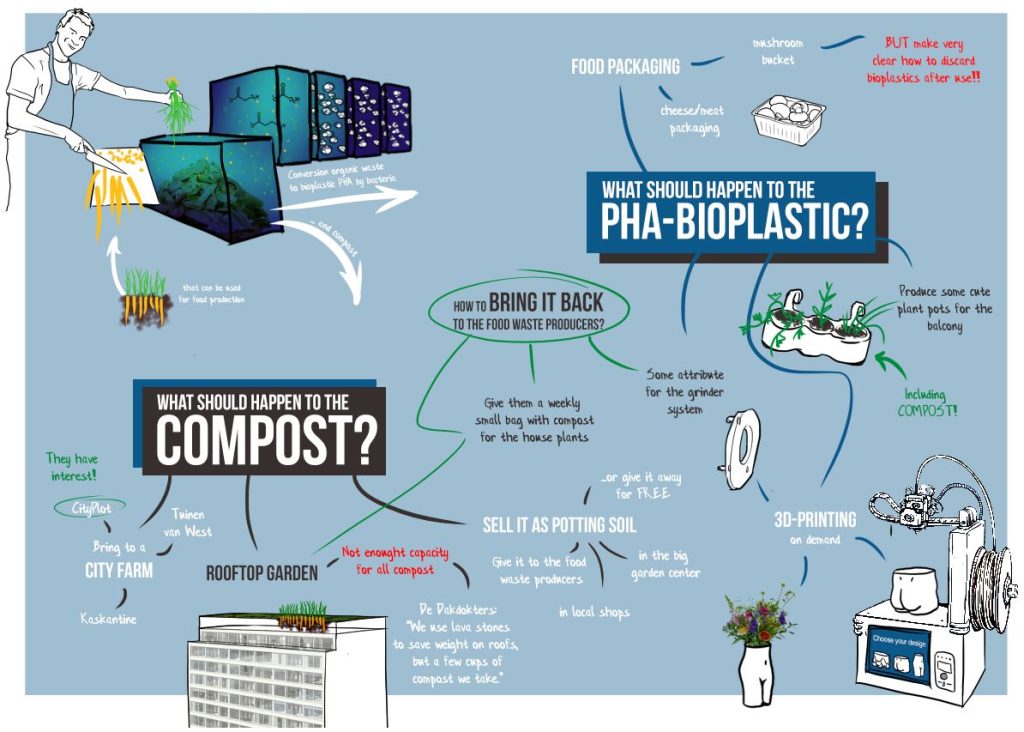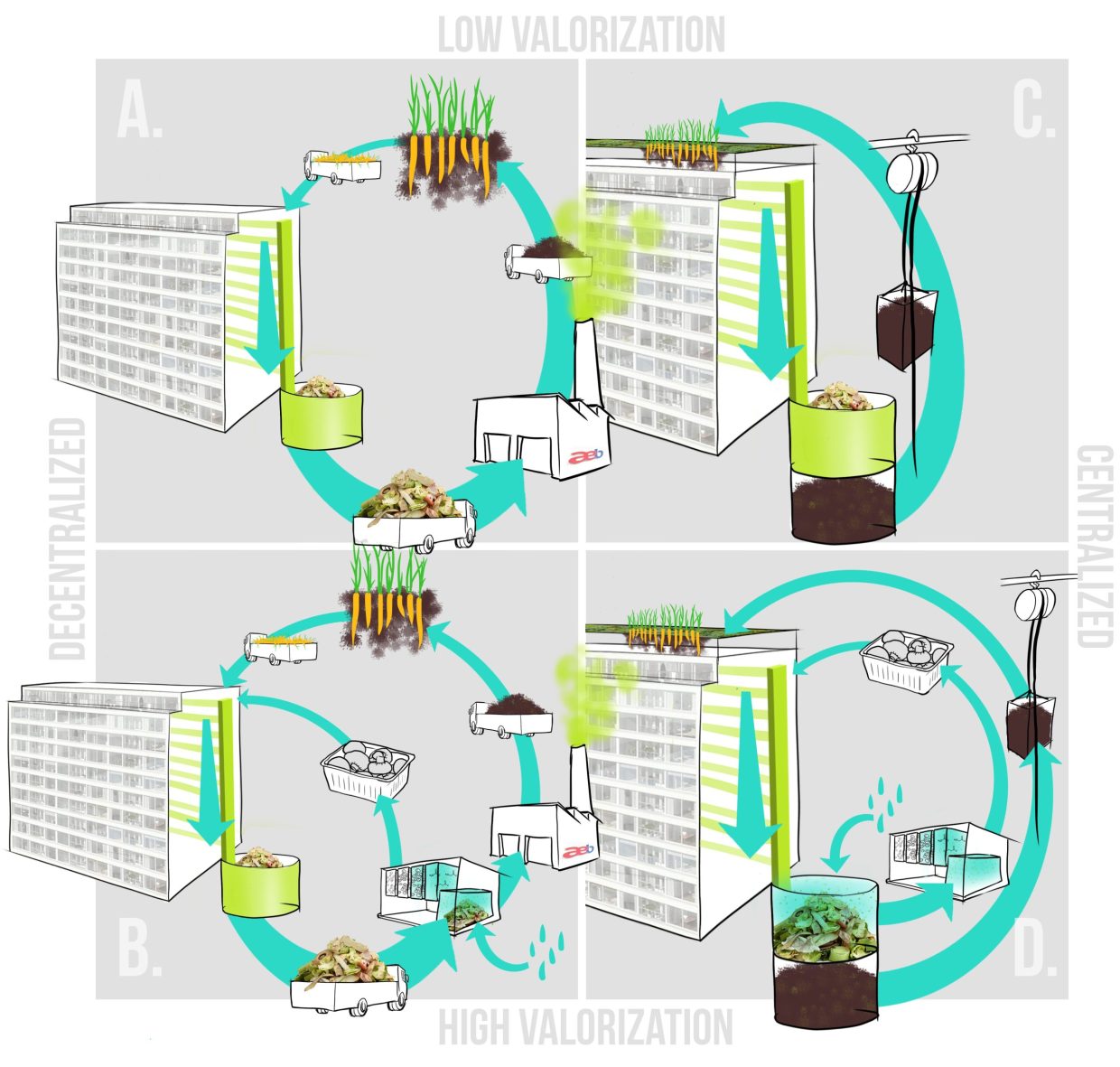Thesis Msc. MADE – Metropolitan Analysis, Design and Engineering
A Communication Plan for the Municipality of Amsterdam
RESEARCH-BY-DESIGN
Residents of multi residential buildings report the inconvenience of recycling in their building as the factor which withholds them from separating their waste (Lakhan, 2016). The municipality of Amsterdam proposed using food waste grinders and is starting pilot projects. In this thesis I aim to provide sufficiently realistic investigation of both the value chain of organic waste as well as to provide a communication plan for user interaction with food waste grinders in order to effect a highest response rate as possible that is as least polluted with non-organics as possible.

CIRCULAR ECONOMY
A transition from linear use of resources and waste production to circular flows with sustainable management of resources, will allow cities to increase sustainability in social, economic and ecological ways for future generations. The circular resource flow is characterised by two distinct routes in the Urban Harvesting Concept (UHC): one for biological and one for technical materials, which have new end-of-life uses instead of becoming waste (van der Hoek et al., 2017).

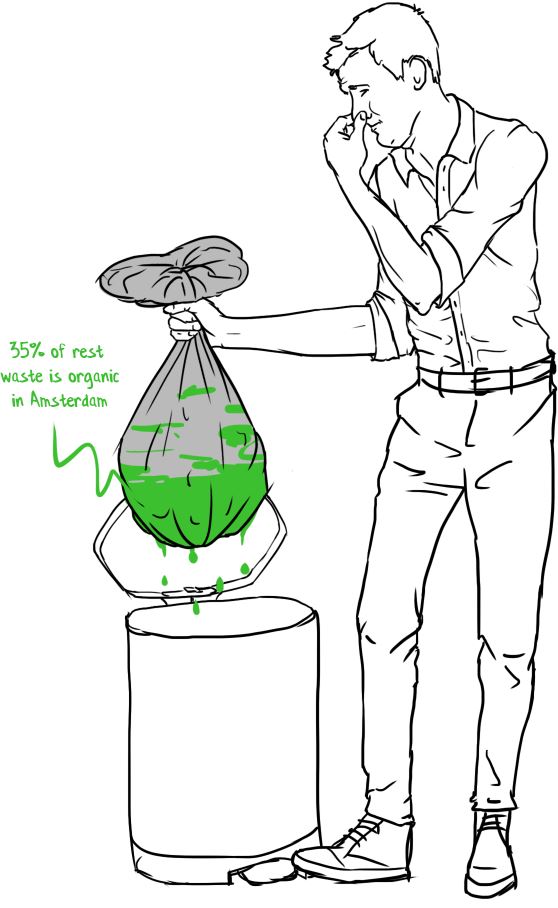
Currently, the City of Amsterdam is far from achieving the ambitious 2030 goal of a 70% waste separation in households, with a 2019 separation rate of 27% (Gemeente Amsterdam, 2020). A transition towards a circular waste management system needs to take place in the capital of the Netherlands. Biowaste makes up for 35% of the current residual waste stream in Amsterdam, as it is not yet separately collected (Gemeente Amsterdam, 2020). Extensive plans to expand high-rise construction in the coming years increases urgency to find solutions.
AFTER LIFE SCENARIOS OF COLLECTED WASTE
In order to achieve the most valuable (both environmentally as humanitarian and economic) use of organic waste, different scenarios are created for the afterlife of OFMSW from the Amsterdam high-rises (E. Annevelink et al., 2016). The most relevant variables considered here are:
- whether or not to produce fatty acids for either PHA or biogas prior to composting and
- local processing around the apartment (centralized) or processing at an existing waste processing company (decentralized).
The four below here visualised scenarios arising from those variables are formulated as follows:
A. Produce and process compost at existing waste processing plant (application search)
B. At existing waste processing plant, produce and process PHA bioplastic from extracted volatile fatty acids, produce and process compost from dry matter
C. Locally producing and using compost (on rooftop garden for example)
D. Locally first produce and process PHA bioplastic from extracted volatile fatty acids, produce and process compost from dry matter.
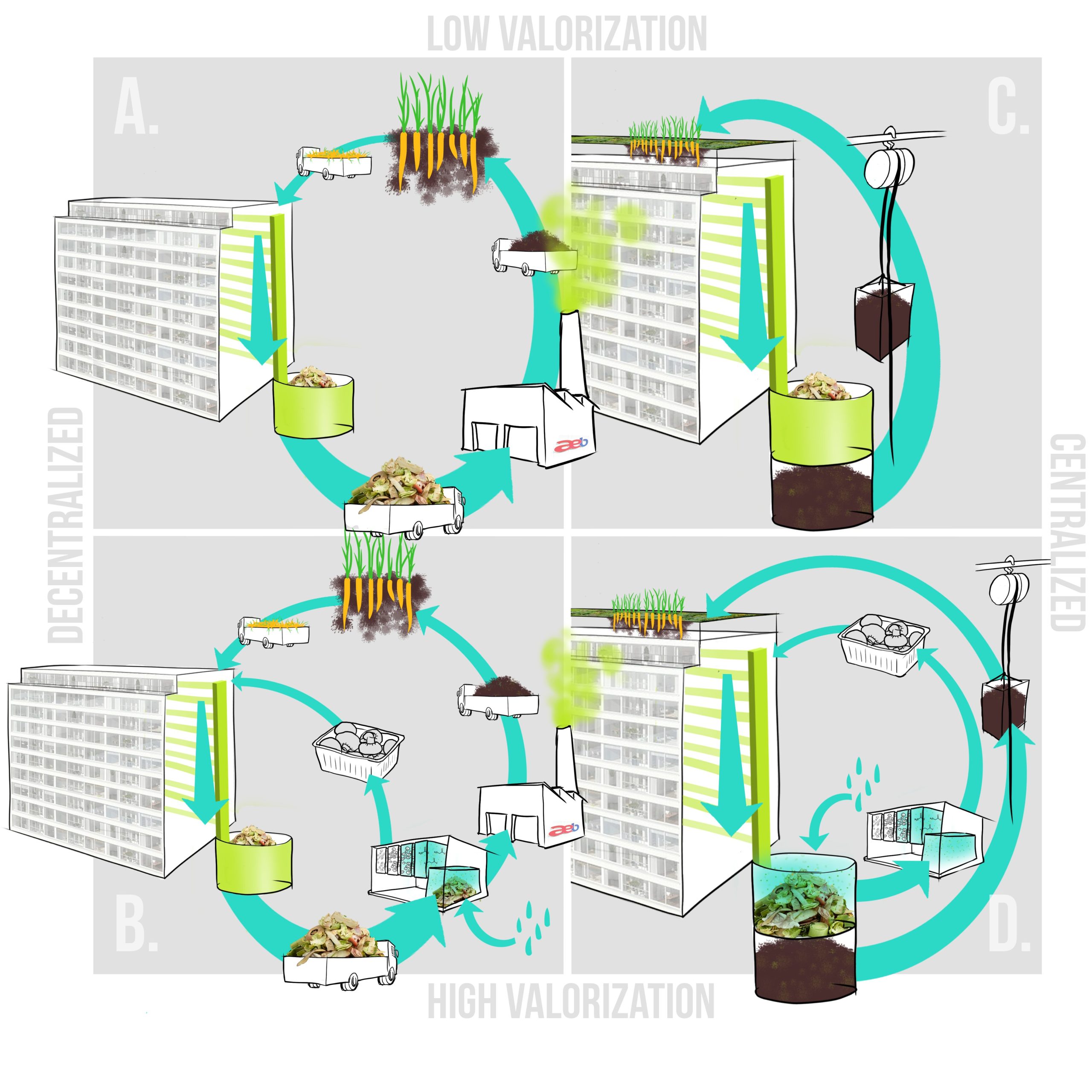
The communication strategy consists of three parts, which together form a communication plan for successful implementation of the yet unknown food waste grinders in the Netherlands. A practical information flyer (1) shows what to throw in, how the grinder works and what to do if it does not work properly. The methodology is to communicate as transparently as possible to actively engage the user and create trust in a system that they want to contribute to.
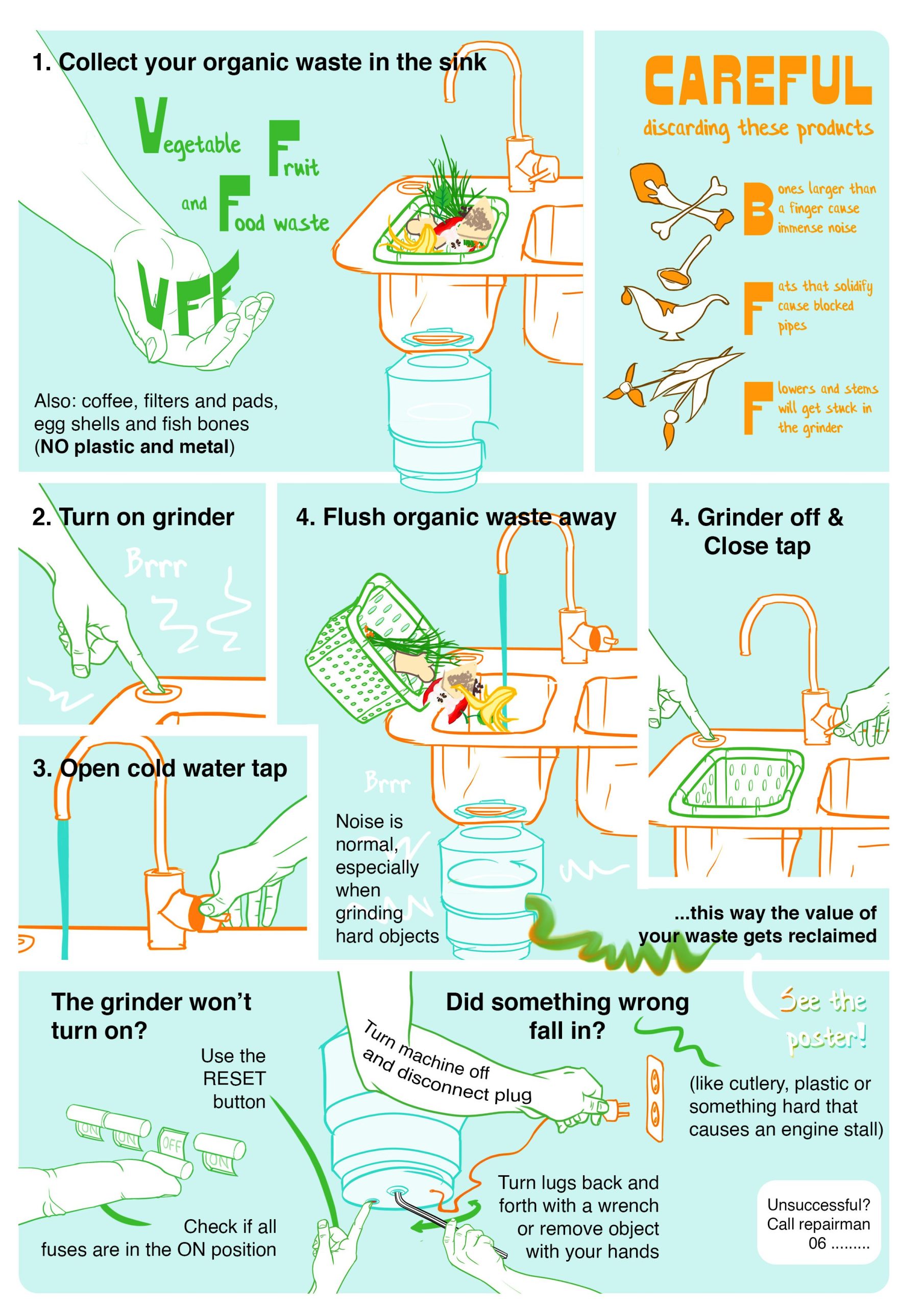
A poster (2) shows the value created from discarded waste and where this will be used in a circular society.
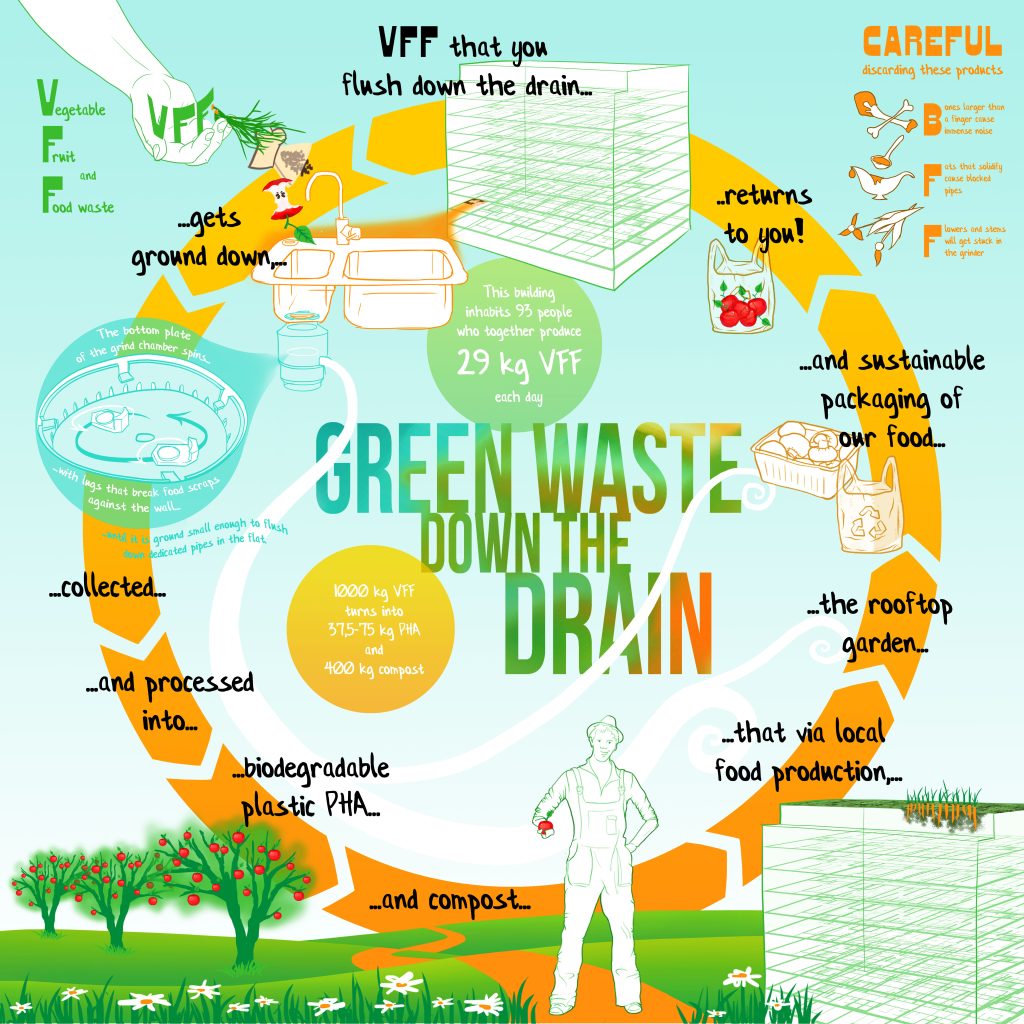
Comfortable introduction to the system will additionally be supported by a demonstration of the machine (3) in real-life before residents will have to use this yet unknown device themselves. I designed an unfolding bin with a built-in grinder for the demonstration.
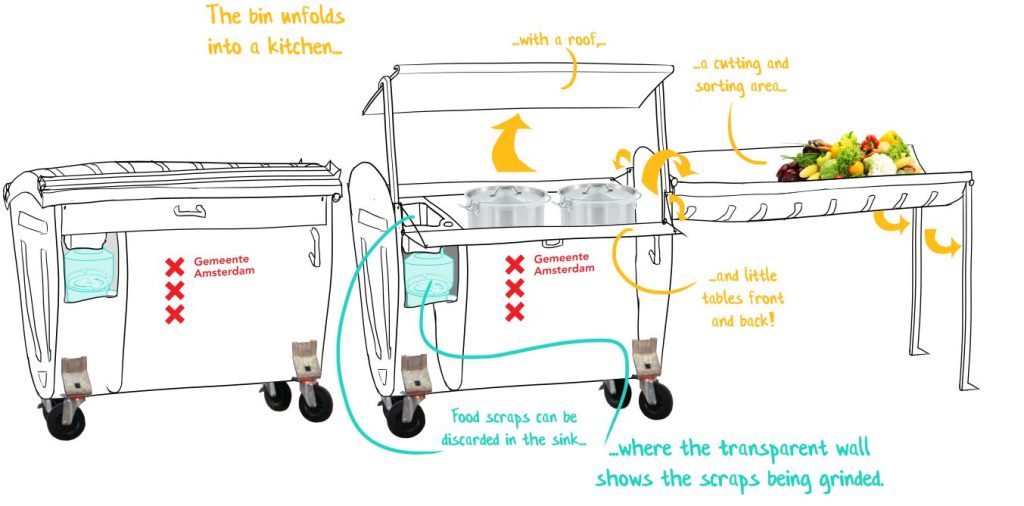
INCREASING VALUE OF WASTE
By increasing the value of end-products made from organics, municipalities and their inhabitants will become more eager to collect and separate organic waste (de Boer, 2019). In addition, the separation of kitchen waste enables that other streams of waste remain cleaner and therefore easier to separate and process.
